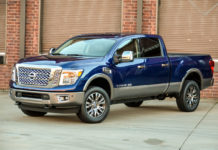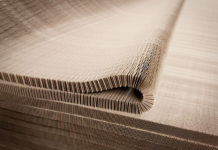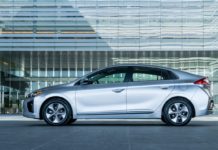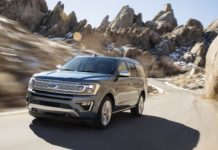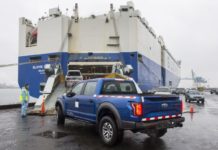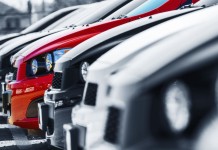With its market launch in California, the E 320 BLUETEC starts out as the world’s only diesel-engined passenger car to be available in California today. Mercedes-Benz is thus the first automaker who complies with the stringent emission limits of California – and other federal states – with a compression-ignition engine.
Since the nation-wide introduction of low-sulfur diesel fuel in October 2006, the E 320 BLUETEC has already been available in 45 U.S. states. The E 320 BLUETEC with its 165 kW/224 hp V6 engine has a fuel consumption as low as 6.7 liters per 100 kilometers (35.11 mpg) and covers a distance of up to 1,200 kilometers (745 miles) on one tank filling. These figures have been impressing American buyers – the proportion of the E 320 BLUETEC in E-Class sales in the U.S.A. is currently as high as 17 percent.
Dr. Leopold Mikulic, Vice President with responsibility for Passenger Car Engine and Powertrain Development within Mercedes-Benz Cars, comments: “Thanks to the highly favorable emission characteristics of this car, only minor technical adjustments were required to obtain type approval for the clean compression-ignition engine in California. We are complying with the stringent LEV2 limits even with our very first BLUETEC generation and are therefore able to offer the car in all 50 states of the U.S.A.”
The demand for the other Mercedes-Benz diesel-engined models already available in 45 U.S. states continues to rise. In the GL-Class, the diesel share is twelve percent, while 22 percent of R-Class cars sold in the United States are fitted with clean diesel engines. In the M-Class, the proportion of models with compression-ignition engines is currently as high as 23 percent.
Technology package for the world’s cleanest diesel
BLUETEC is a modular emission control system which not only reduces particulate emissions by means of a particulate trap but also, and in particular, nitrogen oxides. These are the only exhaust gas constituents which in a diesel engine are still higher than those of gasoline engines, due to the diesel’s operating principle. Mercedes-Benz developed two BLUETEC versions. In the E-Class, an oxidation catalyst and a particulate trap are combined with an advanced, particularly long-lasting NOx storage catalytic converter and an additional SCR catalytic converter. The second BLUETEC version is even more effective in that AdBlue, a harmless aqueous solution, is injected into the exhaust gas flow.
This releases ammonia which in turn reduces up to 80 percent of the nitrogen oxides into harmless nitrogen and water in the downstream SCR catalytic converter. The choice of BLUETEC version depends on the concept and weight of the car concerned as well as on the denoxation requirements.
On the “Road to the Future” to the mobility of the future
“At this year’s Frankfurt Motor Show, we presented our roadmap into the future of mobility with the “Road to the Future”, says Prof. Herbert Kohler, Vice President with responsibility for Advanced Vehicle and Powertrain Engineering. “We demonstrated how we intend to combine clean and efficient drive systems with the highest levels of comfort and safety in the future – in an unprecedented approach.”
The next milestones on the “Road to the Future” will be reached shortly. Following the introduction of BLUETEC in the U.S.A. in 2006, the E 300 BLUETEC will be launched into the European market in December this year. Next year, as many as three clean and economical Mercedes-Benz SUV with BLUETEC technology – from the GL-, ML- and R-Classes – will line up at the start in all 50 U.S. states. These cars comply with the stringent BIN 5 norm and also have the potential to remain below the future EU5 and EU6 limits. Over and above this, Mercedes-Benz will step by step incorporate clean diesel engines in other model series.
The combination of BLUETEC and modular hybrid drive will from 2010 tap additional potential in several Mercedes-Benz model series. This will start with the E-Class whose powertrain with a total output of 164 kW (224 hp) and maximum torque of 560 Newton meters will ensure unrestricted motoring pleasure. The fuel consumption of the BLUETEC hybrid in the E-Class will be as low as 5.1 liters of diesel fuel per 100 kilometers (46.12 mpg). The first gasoline hybrid – the ML 450 – will set a new benchmark among gasoline-engined cars in the SUV segment from 2009 with average consumption of 7.7 liters per 100 kilometers (30.55 mpg).


